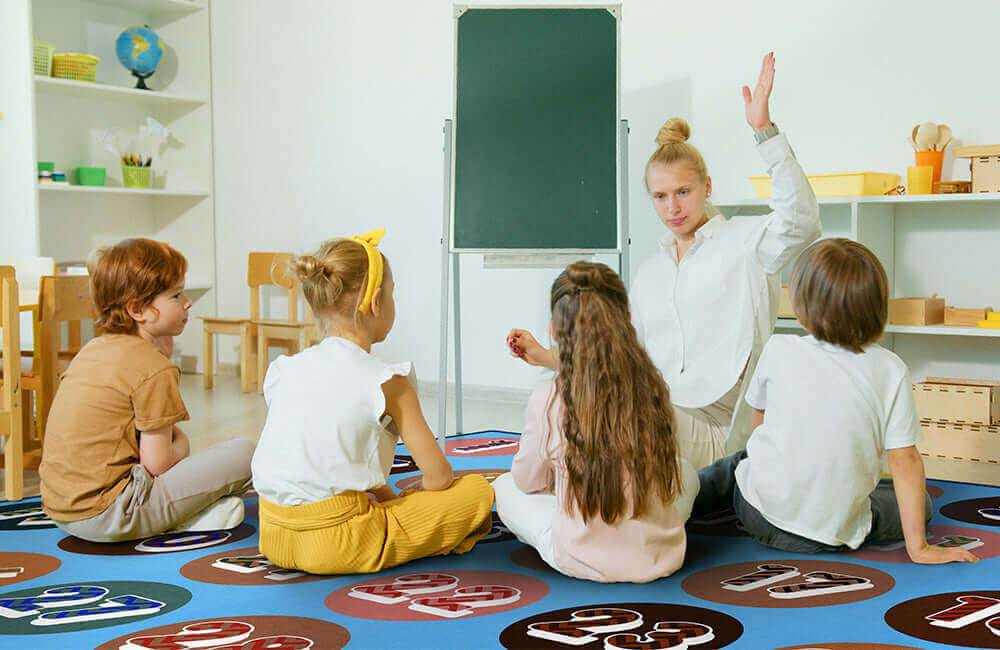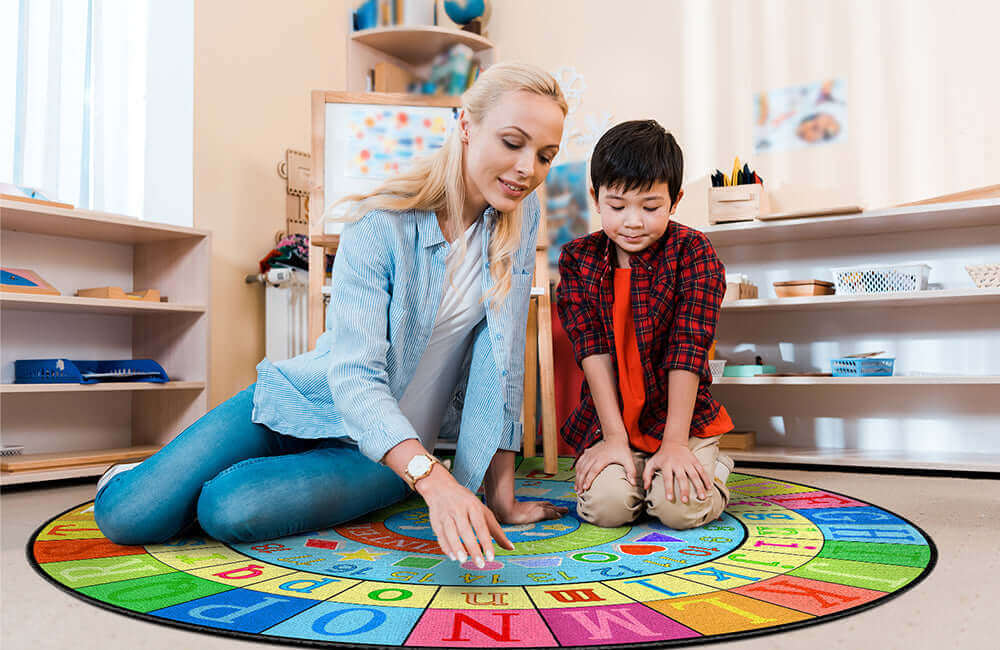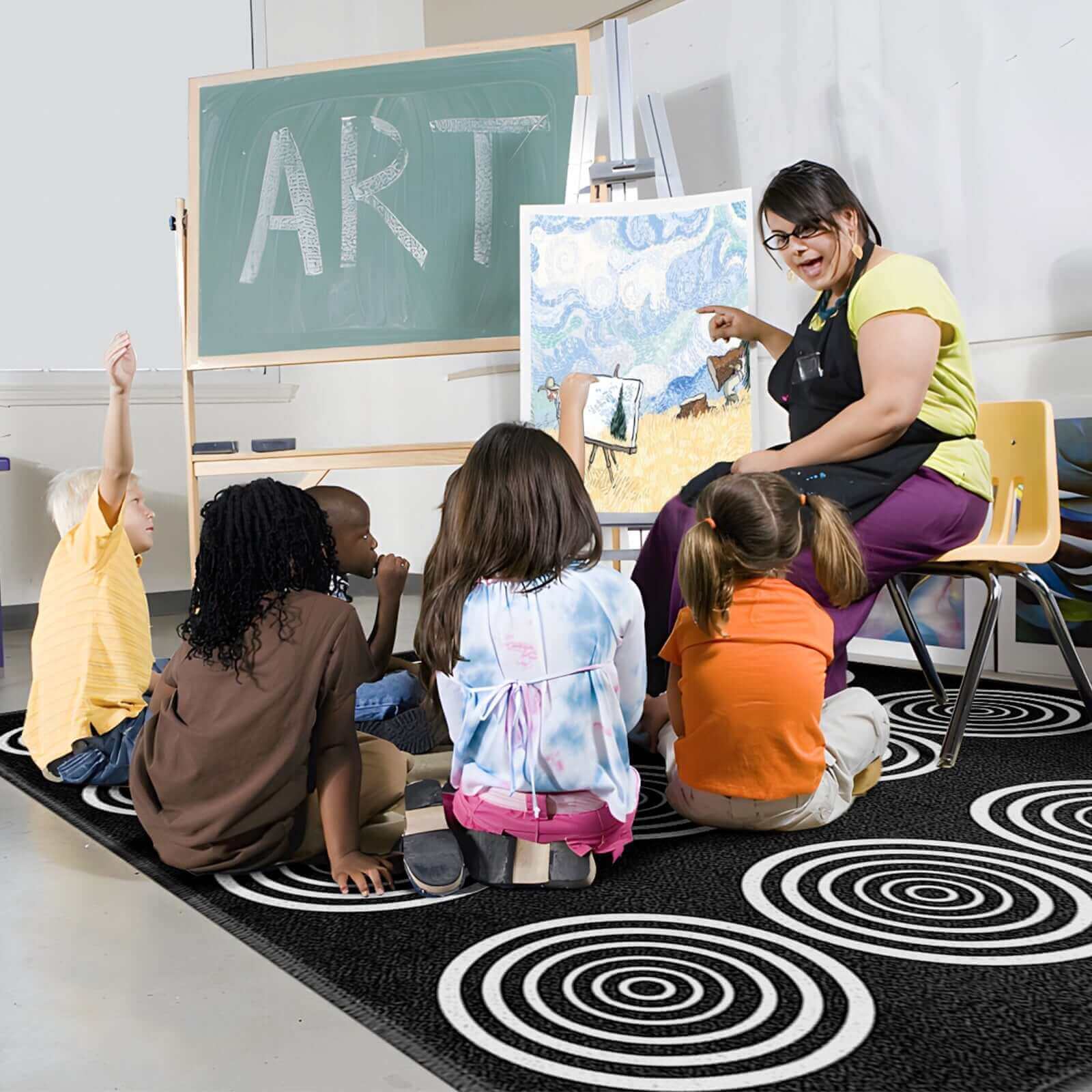The physical environment in which learning takes place has profound effects on students' feelings of safety, their ability to regulate emotions, and ultimately their capacity to engage and learn.
For students who have experienced trauma—which research suggests may be up to two-thirds of all children—thoughtful classroom design isn't just about aesthetics or organization; it's a critical component of their educational success.
Trauma-informed classroom design acknowledges that environmental factors can either trigger stress responses or help students feel secure.
By intentionally creating spaces that address the unique needs of students who have experienced adversity, educators can establish the foundational safety necessary for learning to occur.
Understanding Trauma's Impact on Learning
Before diving into design elements, it's essential to understand how trauma affects the brain and learning process.
According to Child Mind Institute's article on trauma in schools, when students have experienced trauma, their brains may be in a constant state of hypervigilance—scanning for threats rather than focusing on learning.
Trauma can impact:
- Attention and concentration: Difficulty focusing and filtering out distractions
- Memory formation: Challenges with information retention and retrieval
- Executive functioning: Struggles with organization, planning, and self-regulation
- Social interactions: Heightened reactivity to perceived threats in social situations
- Sensory processing: Increased sensitivity to light, sound, touch, or movement
As Edutopia's trauma research summary explains, "When the brain perceives a threat, learning essentially shuts down as the brain prepares for survival." Classroom design can either exacerbate these threat responses or help mitigate them.
Core Principles of Trauma-Informed Design
Trauma-informed classroom design is guided by several overarching principles that inform specific design choices:
Safety First
Physical and psychological safety forms the foundation of trauma-informed environments. Students who have experienced trauma need spaces where they can predict what will happen and where they feel protected.
Predictability and Consistency
Environmental predictability helps students who have experienced unpredictability in their lives. Consistent layouts, routines, and visual supports provide reassuring structure.
Choice and Control
Trauma often involves experiences where control was taken away. Classroom environments that offer appropriate choices help rebuild a sense of agency and empowerment.
Sensory Awareness
Heightened sensory sensitivity is common after trauma. Thoughtful attention to sensory elements—light, sound, texture, space—supports regulation and comfort.
Relationship Facilitation
The physical environment should support positive relationships, which are essential for healing from trauma. Spaces should enable both connection and autonomy.
Cultural Responsiveness
Education Week's article on culturally responsive trauma care emphasizes that "trauma-informed approaches must consider cultural differences in how trauma is experienced and expressed."
Classroom design should reflect and respect the diverse cultural backgrounds of students.
Physical Layout Considerations
The arrangement of furniture and definition of spaces within a classroom significantly impacts students' sense of safety and ability to engage in learning.
Clear Sightlines and Boundaries
- Create visual clarity: Arrange furniture to create clear pathways and designated areas
- Reduce hidden spaces: Position furniture so students can see most of the room, reducing anxiety about unseen threats
- Define boundaries: Use furniture, rugs, or floor tape to clearly delineate different functional areas
Strategic Seating Options
- Provide alternatives to traditional seating: Include options like floor cushions, standing desks, or stability balls
- Consider proximity preferences: Some students feel safer near walls or corners rather than in exposed central locations
- Allow appropriate space: Ensure adequate personal space between students, especially for those with heightened sensitivity to proximity
Exit Accessibility
- Keep exits visible and accessible: For students who have experienced being trapped, knowing they can leave if needed reduces anxiety
- Create multiple pathways: Ensure students don't feel cornered or unable to move freely when needed
Teacher Positioning
- Avoid looming: Position yourself at eye level when possible, especially when working with individual students
- Telegraph movements: Move predictably around the room, avoiding sudden appearances behind students
As noted in Wikipedia's entry on trauma-informed care, "Environmental safety includes attention to physical spaces...to minimize triggers and re-traumatization."
Sensory-Conscious Design Elements
Students who have experienced trauma often have altered sensory processing, making thoughtful attention to sensory elements crucial in classroom design.
Lighting Considerations
- Natural light: Maximize access to natural light, which research shows improves mood and learning outcomes
- Reduce fluorescent exposure: When possible, use alternatives to harsh fluorescent lighting, which can trigger sensory discomfort
- Provide options: Include areas with dimmer lighting and the ability to adjust brightness
- Signal transitions: Use lighting changes as gentle signals for activity transitions rather than abrupt announcements
Sound Management
- Create quiet zones: Designate areas with enhanced sound absorption for students who need auditory breaks
- Monitor ambient noise: Be aware of ventilation systems, electronic hums, or outdoor sounds that may be distressing
- Use sound masking: Consider white noise machines in areas where concentration is important
- Teach noise management: Provide noise-canceling headphones or earplugs as options
Tactile Elements
- Offer diverse textures: Incorporate a range of tactile experiences through seating options, fidgets, and learning materials
- Respect sensory preferences: Some students find certain textures calming, while others find them distressing—provide options
- Create comfort through textiles: Soft elements like pillows, pastel rugs, or fabric wall hangings can make spaces feel safer
Visual Calm
- Reduce visual clutter: While stimulating environments can be engaging, excessive visual stimulation can overwhelm traumatized nervous systems
- Create visual coherence: Use color schemes and organization systems that create a sense of order
- Balance stimulation: Include both visually rich areas and more visually simple spaces to accommodate different needs
According to The Trauma and Learning Policy Initiative, "Attention to the sensory aspects of the environment is essential when creating trauma-sensitive spaces."
Creating Regulation Zones
One of the most effective trauma-informed design strategies is the creation of dedicated spaces for emotional regulation.
Calming Corners
- Dedicated space: Allocate a defined area specifically for calming and regulation
- Comfortable seating: Include soft seating rugs options that provide a sense of security
- Sensory tools: Stock with appropriate fidgets, weighted items, breathing guides, or other regulation supports
- Visual boundaries: Create a sense of privacy without complete isolation
- Affirmation: Emphasize that using this space is a positive choice, not a punishment
Movement Areas
- Designated movement zone: Create space where appropriate physical movement is encouraged
- Movement options: Provide equipment like therapy bands, floor spots for jumping, or simple exercise cards
- Clear expectations: Establish and visually display guidelines for using the movement area
- Accessibility: Ensure all students can access movement options regardless of physical abilities
Grounding Stations
- Nature connection: Include plants, natural materials, or nature imagery
- Sensory grounding tools: Provide items that engage multiple senses to help students reconnect with the present moment
- Breathing supports: Include visual reminders for deep breathing or other regulation techniques
- Positive affirmations: Display calming messages or mantras
Mindshift's article on trauma-informed spaces notes that "having a designated space for calming down gives students autonomy in their regulation process and destigmatizes emotional needs."
Supporting Transitions and Routines
Transitions between activities or spaces can be particularly challenging for students who have experienced trauma. The physical environment can help support smoother transitions and clearer routines.
Visual Schedules and Cues
- Prominent scheduling: Display the day's schedule in a central location using both words and images—this can be near a circle time rug to ground routines visually
- Transition warnings: Implement visual timers or signals that help prepare students for upcoming changes
- Navigation supports: Use floor markers, signs, or color-coding to help students navigate transitions independently
Consistent Organization
- Transparent storage: Use clear containers and visible labels to reduce uncertainty about where items are located
- Visual instructions: Post clear visual guides for routines like entering the classroom, transitioning between activities, or cleaning up
- Student ownership: Involve students in developing organizational systems to build investment and agency
Time Awareness Supports
- Multiple clock types: Include both digital and analog clocks for different time-processing preferences
- Visual timers: Use hourglass timers, time-tracking apps on displays, or visual countdown systems
- Personalized timing tools: Provide individual timers for students who benefit from managing their own pacing
According to Cult of Pedagogy's trauma-informed teaching article, "Predictable routines supported by the physical environment can significantly reduce anxiety for students who have experienced chaotic or unpredictable circumstances."
Building Community Through Design
Trauma-informed design also considers how the physical environment can foster healing relationships and community building.
Collaborative Spaces
- Flexible grouping areas: Create spaces that can be easily reconfigured for different sized groups
- Face-to-face orientations: Arrange seating to facilitate eye contact and communication when appropriate
- Shared resources: Design resource areas that encourage positive interaction and sharing
Identity Affirmation
- Diverse representation: Ensure that visual materials represent diverse identities and experiences
- Student contribution: Create spaces where students can safely share aspects of their identities and cultures
- Belonging signals: Incorporate elements that explicitly communicate that all students belong and are valued
Connection Centers
- Greeting area: Designate a specific space for welcoming activities at the beginning of the day
- Gratitude or appreciation display: Create a physical space where positive connections can be visibly acknowledged
- Collaborative projects: Design areas that showcase collective work and achievements
As Learning for Justice explains, "Physical spaces that promote connection help rebuild the sense of social safety that trauma often damages."
Implementation Case Studies
Elementary Classroom Transformation
A first-grade teacher with limited resources implemented trauma-informed design by:
- Rearranging furniture to create clear pathways and a dedicated peace rug corner
- Using cardboard study carrels decorated by students as optional sensory breaks
- Adding three types of alternative seating through donor funding
- Creating a visual schedule system with movable components
- Installing battery-operated puck lights to create a lower-light reading nook
Result: Behavior incidents decreased by 40% in the first month after implementation, and student self-regulation improved significantly.
Middle School Approach
A sixth-grade teaching team redesigned their classrooms with trauma in mind:
- Established consistent layout elements across all subject classrooms
- Created a shared regulation space in the hallway pod with administrative support
- Implemented a visual cue system for transitions between classes
- Designated both collaborative and individual work areas in each room
- Developed student-led committees for different aspects of classroom environment
Result: Students reported feeling safer and more connected, while teachers noted improved transition times and decreased conflict during group work.
High School Innovation
A high school English teacher transformed her classroom by:
- Creating a "mobile regulation toolkit" that students could access discreetly
- Redesigning the classroom entry experience to include a daily greeting and orientation
- Installing adjustable lighting options with student input
- Establishing phone "parking" that acknowledged technology needs while setting boundaries
- Incorporating student cultural references and identity elements throughout the space
Result: Class attendance improved by 22%, and student writing showed greater depth and personal connection.
Conclusion
Trauma-informed classroom design isn't about creating perfect spaces—it's about intentionally shaping environments to support safety, regulation, and learning for all students, especially those impacted by adverse experiences.
Even small changes to layout, sensory elements, regulation spaces, transition supports, and community-building features can make significant differences in how students experience the classroom.
Remember that the most effective trauma-informed design involves students in the process whenever possible.
Their input not only creates more responsive environments but also rebuilds the sense of agency that trauma often diminishes. Begin with one area of focus, gather feedback, and continue to refine your approach.




Leave a comment
This site is protected by hCaptcha and the hCaptcha Privacy Policy and Terms of Service apply.